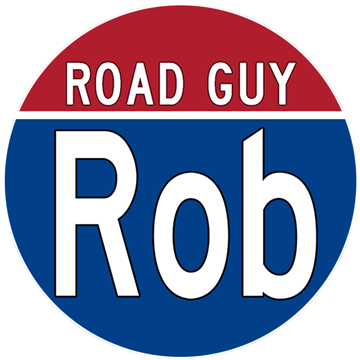So, you’re having this really nice walk across town when suddenly, there’s a freeway you have to cross. Seeing a large bridges with nice big sidewalks can be a relief. But what about those pesky interchanges where cars are entering and exiting the freeway?
It gets a little bit scarier at newfangled designs which work so efficiently, the cars never seem to stop moving! Traffic engineers may forget about people on foot as they step away from old boring designs. It’s a little harder to forget when you walk around on two legs.
If we lived in a perfect world, pedestrians would never have to mix with cars at these busy freeway interchanges. Pedestrian bridges are great ways to get people over freeways, so you don’t have wheelchairs and bicyclists all tangling up with the freeway interchanges. It creates space just for cars and space just for pedestrians. The state of Utah tried this at a freeway interchange on Bangerter Highway (State Route 154) in West Jordan. But making the new bridge work with the freeway created an eyesore for a neighbor I spoke to.
“I did not imagine it being 50 feet in the air,” the man named Stephen told me. “It’s actually higher on this side than it is on the other side.
Steven said he’s fine living next to a highway. But everything changed when his neighbors got a notice saying the state was purchasing their house to tear it down.
“They came home one day and found out, ‘you have to move.'”
The state’s reasoning is that the bridge would help elementary school kids get to school. Instead of crossing the freeway along the busy boulevard at 70000 South, they can instead walk along quiet neighborhood streets.
A previous sky bridge, located closer to the old stop light, only needed to be tall enough to clear tall big-rig semi trucks. Stephen’s new neighbor, the relocated sky bridge, has to clear big rig trucks driving atop a new overpass that crosses 7000 South. This meant building a towering structure roughly as high as a seven-story office building.
“Anybody that walks over that bridge can look into my backyard; see what I have, see what I’m doing,” Stephen said. “I told them, they can tear it down for all I care.”
Three Types of Crosswalks
Due to their expense, most cross-street freeway interchanges rely on crosswalks instead of imposing sky bridges. The nature of these crossings can make a typical person on foot feel quite intimidated. Even more-so than a typical roadway crossing.
To explore why freeway crosswalks feel so stressful, we need to explore three attributes:
- Speed of the approaching car
- Length of the crosswalk
- Signals that pedestrians have to show their need to cross
Even though there are countless designs for freeway interchanges, there are really only four combinations of ramps:
- Curvy free-flowing ramps (driver does not stop), where the driver speeds up to enter the freeway
- Curvy free-flowing ramps (driver does not stop), where the driver slows down to exit the freeway
- Right-angle ramps (driver must come to a stop), where the driver speeds up to enter the freeway
- Right-angle ramps (driver must come to a stop), where the driver slows down to exit the freeway
Right-angle ramps meet at a 90-degree corner, typically with a stop sign or traffic signal (stop light). Because these come to a sharp corner, drivers typically have to slow down below 20 miles per hour to complete their turn. Free-flowing ramps make arc or semi-circular shapes designed to keep a car moving. Combine these with drivers eagerly accelerating to enter the freeway, and you wind up with a potential pedestrian nightmare.
Pedestrians at Diverging Diamond Interchanges
The Utah Department of Transportation (UDOT) built a highly-efficient interchange called a Diverging Diamond Interchange (DDI) in American Fork, Utah. These feature free-flowing ramps for drivers turning right and even for drivers turning left!
“Cars are just going and going and going. They obviously see there’s a pedestrian there,” Ken, a pedestrian using the interchange, said. “I have to literally hold out my skateboard like a katana blade and get in front of them, to make them stop.”
Clearly painted stripes on the roadway, combined with gleaming new warning signs weren’t enough to get drivers to stop for for Ken and his girlfriend, as they returned home from a convenience store to the east of the freeway.
“Oh, it’s so bad! I mean the crossings! On this side, you have a button to push to be able to cross. And that’s it!”
See more in the video!
